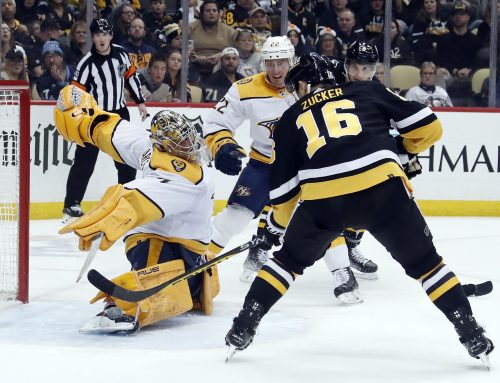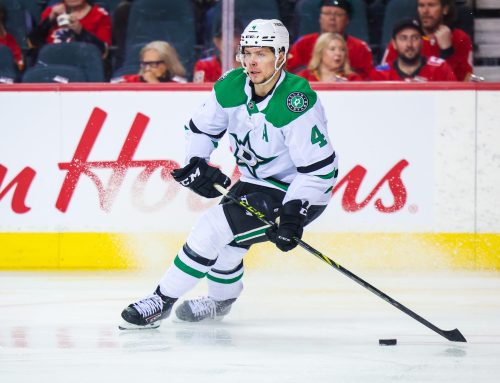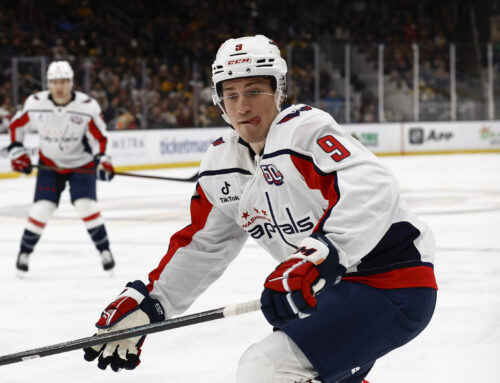
This week's Capped reviews the key aspects of making a blockbuster trade in a cap league.
****
There have not been many transactions of note in the last week in the cap world, so we look elsewhere for topics this week. At this point in time, we are around the quarter mark of the season. NHL teams know that even at this point in the season, if you are not in a playoff spot and were planning to be, changes are coming, and fast. Fantasy general managers are not all that different. Some managers are struggling, some have injury problems, and some just always have an itchy trigger finger. Around mid-November is the time I find second-most active in trade markets, behind only trade-deadline week. As a result, I have made quite a few moves recently across my leagues, but none bigger than the one from Monday in my Cap-Dynasty league. I’ll walk you through the deal and some tips for managing your own blockbuster discussions.
****
The Trade Breakdown
I acquired:
C – Ryan Johansen, Nashville ($8,000,000)
G – Corey Crawford, Chicago ($6,000,000)
LW – Magnus Paajarvi, St. Louis ($800,000)
G – Anton Forsberg, Chicago ($750,000)*
A 2018 Fourth round pick in our prospect draft (Will be between pick 73 and 96)
=$15,550,000
In exchange for:
G – Marc-Andre Fleury, Vegas ($5,750,000)
RW – T.J. Oshie, Washington ($5,750,000)
C – Sam Bennett, Calgary ($1,950,000)
RW – Brandon Tanev, Winnipeg ($700,000)*
=$14,150,000
*Minors eligible
To give a gist of the league settings, we start one goalie, six defencemen, and 12 forwards across our 24-team league, with an additional 27 minor spots for prospects. Categories counted are goals, assists, plus/minus, penalty minutes, shots, game winning goals, powerplay points, short-handed points, hits, blocks, faceoff wins, goalie wins, goals against average, save percentage, saves, and shutouts. It is a weekly head to head league, where a single win, loss or tie is the result of each week’s matchup.
Our salary cap sits at $75 million, with each player’s average annual contract value being the official number counted. I won’t get into the full details of our contract system, but the biggest thing to note is that a player cannot simply be dropped; they must either be traded, bought-out, or released once their real contract expires. As a result, eight-year contracts such as those sported by Oshie and Johansen are not to be acquired lightly, and can become a burden by the last few years.
****
My Reasoning for the Trade
Looking at my team, the biggest weakness was goaltending. I had asked about Johansen before, but talks never got far until I also asked about Corey Crawford. From there, the goalie position had to be balanced, as did the salary going each way (both of us were close to the salary cap, but I had a little wiggle room to play with). That gave us the meat of the deal, with Johansen, Crawford and Forsberg being balanced out by Oshie and Fleury. From there, some more salary had to go back to the other GM, as did a little more incentive. Sam Bennett became the extra piece to balance out both those above points. Bennett has some good potential, and his outlook in leagues that count hits and faceoff wins was even better. His slow start shouldn’t really change that outlook, but it does bring his value down a little. That being said, his contract is at this point a bargain, making anything else in the future just gravy on top – and the points will come.
Paajarvi and Tanev were thrown into the deal because the other manager needed some roster flexibility for sending a resultant player back down to the minors. The fourth-round pick was added on to balance it all out, and both managers left the discussions happy with what they got, but a little disappointed at the same time. In the end, I got my goalie upgrade and a slight forward upgrade.
****
The Reasoning for the Other GM
I can’t fully speak to all of the motives for the trade from the point of view of the other GM, but roster and salary cap flexibility seemed to be the main ones. Ryan Johansen’s contract was a big weight on his mind, as was having $6 million tied up in a goalie for the next three years, on a Chicago Blackhawks team that seems to be more of a playoff-bubble team than a Cup contender. Oshie is also on an eight-year deal, but the $5.75 million is a lot easier to stomach in the long run. Getting the Sam Bennett upside and the roster/cap flexibility without downgrading too much elsewhere, made the deal one that he was content with executing.
****
Lessons
There are three main things that should be noted from this deal for properly moving forward with future trades in cap leagues.
First off, dealing with the salary cap. Having salary cap room is excellent, and is one of the biggest assets in any salary cap league. If you don’t have the flexibility to take advantage of situations when they arise, then there is a lot that you will be missing out on. However, the cap space is only an asset if it actually gets used. Cap leagues don’t pay out actual money, so whatever cap space isn’t filled just goes to waste. Knowing when to take advantage of the cap space to make your team better is key.
Secondly, in most leagues, but in cap leagues especially, general managers can be looking for very different things. Evaluating the teams of your fellow league-mates in an objective manner can lead to seeing holes to be targeted in a trade. For example, long term contract flexibility and a need for a minors-eligible skater may not be immediately evident. Even if it is only after trade talks have started, take the five minutes to really comb through your opponent’s roster, it will pay off in the end.
Lastly, trades are a give and take. Receiving an upgrade in two areas, meant giving something up in others. In the end, I took on a little over one million in salary, term on some bigger contracts, the anchor roster player in Paajarvi, and an extra draft pick. The biggest reason why I like the deal from my side though, is that I used my flexibility in certain areas to improve my team. The flexibility can be gained much easier, little by little in other trades, but big-name talent like Johansen and Crawford can be tougher to acquire on their own. Don’t miss out on a good deal just because you don’t want to give up anything.
****
Fallout
I actually ended up trading away Johansen and Paajarvi on Wednesday in another big blockbuster, but that may be a trade for another day. Let me know in the comments if you are interested enough in another trade write up on that one for next week.
****
Thanks for reading! Feel free to comment with your thoughts on the trade below. As always, you can find me on twitter @alexdmaclean where I post some of my other smaller musings that don’t make it into the articles.
7 Comments
Leave A Comment
You must be logged in to post a comment.





 SEA
SEA NYI
NYI BUF
BUF DAL
DAL
 CBJ
CBJ NYR
NYR ANA
ANA STL
STL L.A
L.A COL
COL

I have no idea how to value draft picks. I tried building an algorithm to at least value what a pick is worth but i am now stuck. Any ideas for that?
Draft picks are only worth whatever you can get for them. If you don’t trade them by the time the draft rolls around, technically you trade it for a new prospect in your system. So they are trade chips that will net you a player now or a player later. The best way to try to do it is to look at who you can get with the pick, and attach a name to it. That gives it some value that’s easier to figure out how to move.
That’s a huge steal for you, congrats. Oshie at $5.75M until he’s 39? That contract is horrible in a league where you’re not allowed to drop him. The only question is – will the Caps buyout that contract before your trading partner does? It could go either way.
I’m in this league and owned Oshie last season, I tried all off-season to sell him for a fairly reasonable price (which came down over time), I mean 30 goal scorers don’t grow on trees, but since he had that 8 year contract (until he’s 39) there were no takers. I had to decide to drop him or Tatar for salary compliance, it was an easy decision. I think he will get bought out at some point, but you don’t gamble your teams future on that. Salary is everything.
Oshie was a last second add for me this summer because I figured I wouldn’t own him too long, and with the cap space I had in the summer, he made sense as an add that could exceed his value this year.
Not sure how much of a steal it will be, and tougher today having moved RyJo already. I think a lot of it depends on how Bennett pans out, since the others are mostly known quantities.
I would be interested to see how your flip of Johansen/Paajaarvi deal worked out, and what the return was.
Meat of the deal was RyJo, Bernier and Jarnkrok for Skinner, Darling and McGinn. If I don’t have a better topic come up for next week’s article, I may cover it in full there anyways.